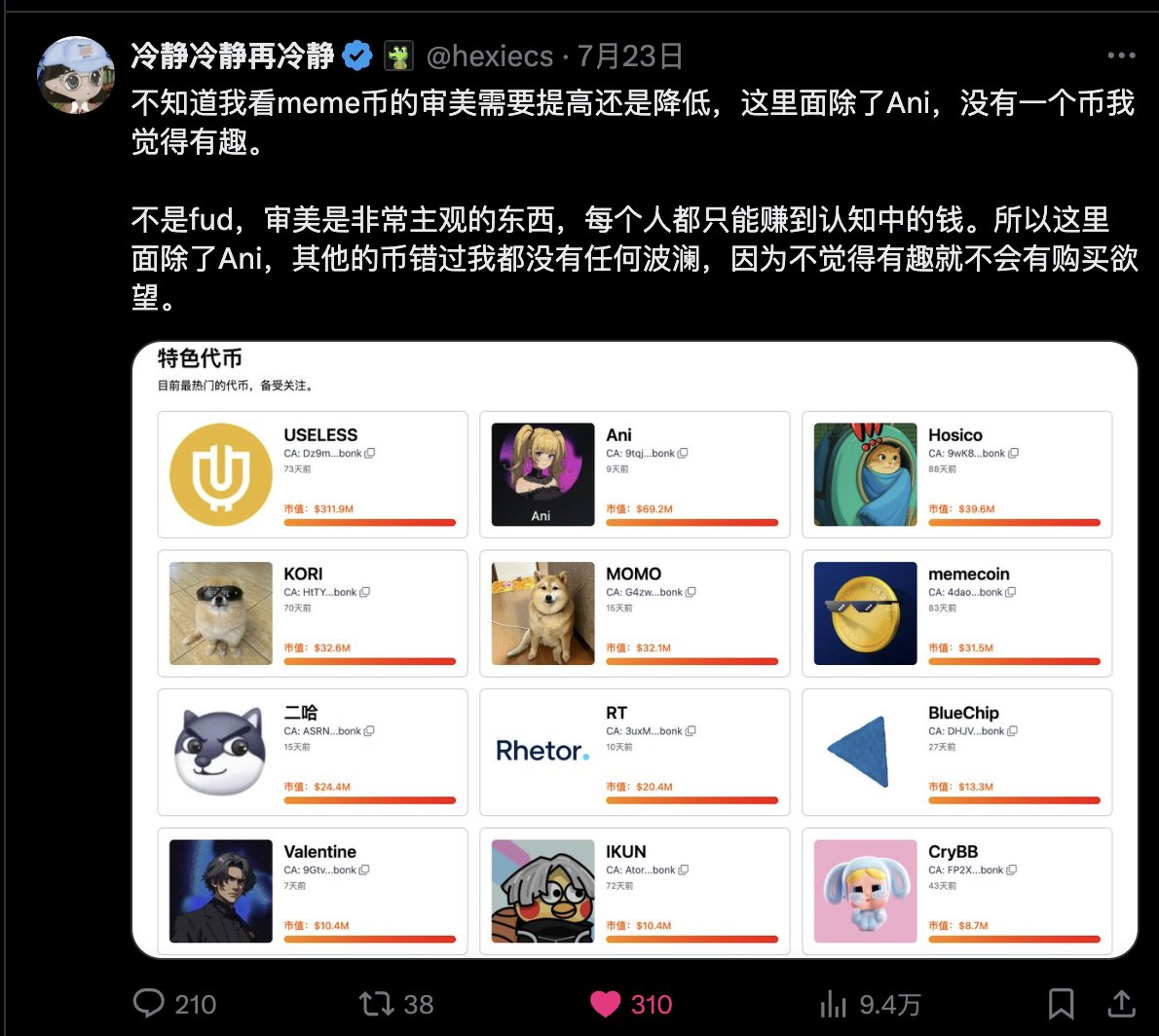Lately everyone has been talking about methodology
Narrative analysis On-chain analytics
1. Narrative analysis The ceiling I have seen My master
A trader's accuracy of 20-30% of the narrative is excellent
But my master's accuracy in the narrative I think it can be 80%
Basically, every time I send my CA, it's a big gold CA at the bottom
The strength is terrifying, low-key, and the pure narrative transaction is A9 early
2. On-chain analysis of the ceiling I've seen Lei Group
On-chain fund tracking and analysis for project side actions
Approve contracts, add pools, transfers, etc. can be accurately monitored and analyzed
When the project party is ready to sell, they can sell it to the project party
The project is ready to pull the market, and they can buy the front of the project party
It really conquered me with strength and pattern
Recently, many people should step on empty nihilism and Chinese ticker
I also have a lot of time out of the air, and I feel that I have only made no progress in BSC
I swiped a lot of ETH and BASE teachers' tweets
For example, @memekiller365 @0x_CryptoAu @Y_babyshow
Most of them are analyzed and researched, and the results are very enviable
SOL is a combination of the two except for @0xXQ1 @0xN10N
Most of it is pure construction and finding angles to pvp
EVM chains feel more like investment research
Low multiplier large position and large market capitalization return
SOl chains feel more like casinos
The income of high multiplier small positions and small market capitalization
Saw @Mirro7777's tweet
After the web2 star group harvest last year, I thought the meme was over
But then there was an AI wave, a BSC wave, and a BONK wave.....
The route of on-chain analysis and investment research is always evergreen
If you only look at the narrative angle afterwards, it may be difficult


Playing on-chain Meme, I personally think there are two main methodologies, one is narrative trading, and the other is address mining, the former focuses on the smell and sensitivity of the market, and the latter focuses on careful study and analysis of data.
Not only do they not conflict, but they often need to be used in combination. They also correspond to the two driving forces required for the rise of tokens, namely the joint force of the market and retail investors, and the pull of bookmakers and whales.
Narrative trading, the focus is on what kind of story the token tells, whether it can resonate with the market, and how far a token can go based on the background of the event, innovation, popularity, etc.
For example, $Ani and $Gork are narratives spawned by Musk's new products, which are both influential and interesting, and are easy to spread; $Trump, $Pnut, are contributed by major political-related events; Last year's AI hackathon market paid attention to Dev resume and industry status; $Neiro, $Pochita is a derivative of the Dogecoin concept; $Fartcoin, $Useless emphasizes crypto nihilism.
When the market sentiment is good, retail investors are highly motivated, and there is a lot of liquidity, the narrative itself can give birth to Meme coins with a market value of tens of M or even higher, and when the market is bad, it is necessary to rely on the market maker to control the market and attract attention through the increase, typical of which is the recent $Aura, which has been pulled from a state of almost zero to 230M in a few days.
To catch this type of banker, the most suitable way is to dig the address, analyze whether there are clusters of pull addresses and their intentions, or find clues through the previously accumulated address library. The disadvantage of this method is that it is very time-consuming, because the pull address is often changed frequently, and the second is that even if traces are seen, once the bottom chips are not firmly controlled, the dealer can choose to abandon the market, and the initiative is completely in the hands of others.
Whether it is a big KOL on Twitter or a car on the chain, most of them are mainly narrative transactions, this is not because the address mining is not good, in the final analysis, it is because it is reflexive, once a certain pull address is shared, and more and more people know, it means that the resistance to pull is getting bigger and bigger, resulting in abandonment or changing addresses. In contrast, address mining is a technical activity that is only suitable for small-scale sharing, while narrative transactions need to reach as many people as possible, after all, consensus is the core of the narrative.
38.45K
74
The content on this page is provided by third parties. Unless otherwise stated, OKX is not the author of the cited article(s) and does not claim any copyright in the materials. The content is provided for informational purposes only and does not represent the views of OKX. It is not intended to be an endorsement of any kind and should not be considered investment advice or a solicitation to buy or sell digital assets. To the extent generative AI is utilized to provide summaries or other information, such AI generated content may be inaccurate or inconsistent. Please read the linked article for more details and information. OKX is not responsible for content hosted on third party sites. Digital asset holdings, including stablecoins and NFTs, involve a high degree of risk and can fluctuate greatly. You should carefully consider whether trading or holding digital assets is suitable for you in light of your financial condition.


